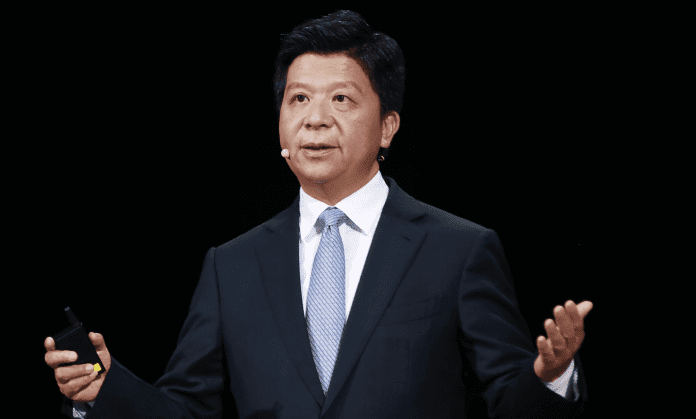Wait and hope. That was the message from Huawei this week as it restated its master plan for supremacy of the digital change circuit in the shadow of stretching US sanctions against the firm. The company’s rotating chairman, Guo Ping, told the company’s CONNECT 2020 event in Shanghai that Huawei will stick with its original focus on five key tech disciplines, and trust in the growing appetite for industrial change. The rest is out if its hands, it reflected.
Guo (pictured) said: “As you know, Huawei is in a difficult situation these days. Non-stop aggression from the US government has put us under significant pressure. Right now, survival is the goal. As Alexandre Dumas said, ‘All human wisdom is summed up in two words – wait and hope.’ As more governments and enterprises go digital and embrace intelligence, the ICT sector will see incredible potential for growth. We look forward to opening this new chapter.”
Guo quoted a report from Oxford Economics, which reckons on a 3:1 return on digital transformation. One dollar in digital tech gets three dollars back, as improved performance. The digital economy accounted for around one-third of China’s total GDP last year, and two-thirds of its total economic growth, said Guo. “New digital demand from governments and enterprises is constantly emerging,” he said.
Huawei is gearing up the drivers of this digital-change architecture, he said. “5G and IoT are at the heart of connectivity; cloud and AI [are] the future of computing.” On top, the company is developing ‘industry applications’, as the spark on top of these cornerstone architectural technologies, andas the fifth pillar in its digital enablement strategy. Last month, the China-based firm launched a “first batch” of industrial 5G applications.
Guo referenced twin principles of the internet boom, about optimal interoperability, to explain that global investment in connectivity and computing, where Huawei hangs its hat, will dictate how society grasps digital change.
He said: “We’re all familiar with Moore’s law. As time passes, computing power will continue to increase as the price decreases. Metcalfe’s law tells us that the value of a network is proportional to the square of the number of nodes in the network. So the density of our connections multiplied by the sheer amount of computing power at our disposal will ultimately determine the strength of the digital economy.”
Guo went on: “Connectivity and computing will change all industries, and create new value for society. We have seen great changes in the role of connectivity across all sectors of society, including government and enterprise applications. The evolution from 1G through 4G pretty much solved the challenge of connecting people. 5G has ushered in an entirely new era, where everything in the world is fully connected.
“At the same time, the computing industry has gravitated towards AI, which is already creating immense value for governments and enterprises around the world. Connectivity and computing must become further integrated with industries. Combined with unique industry know-how and the right ICT technology, this can create practical value much more quickly. Over time, you can link these scenarios together and build up to your grand digital vision.”
There were examples. Chinese coal mining firm Henan Golden Stone Group has worked with Huawei to automate the coal blending process in coke manufacturing; the pair came up with an “intelligent coal blending model” to increase the precision, efficiency, and reliability – to the tune of 15 yuan per ton of coal, or 27 million yuan (about $4m) per year. “Expand that to the entire coking industry in China,” said Guo. “If every coking plant saves 10 yuan per ton, the entire industry can save over six billion a year.”
Similarly, DHL tapped Huawei to automate its Kangqiao Logistics Hub, covering around 100,000 square metres in Shanghai. The work covered inventory management and vehicle scheduling, to reduce blockages in its indoor warehouse and outdoor transport systems. Separate dock, warehouse, and asset management systems were integrated as “intelligent, interconnected processes”, increasing operating efficiencies by 30 percent.
Another example, offered by Guo: Shenzhen, Huawei’s hometown, is in the process of becoming a smart city, he said, and has recruited Huawei to integrate the service systems of 42 different government agencies. “They are leveraging our strengths in 5G, cloud, and AI to integrate over 100 types of data, creating an integrated ‘1 +10 + N’ central management hub,” he explained.
Neither this equation, nor its result, was ever explained in the CONNECT 2020 keynote, but the whole speech pointed the same way – that the wider enterprise market for 5G and IoT, layered with high-grade computing and laced with rising challenges around open networking, will outrun any geo-political upheaval in the longer term. “We see a massive convergence of opportunities across [these] five tech domains,” said Guo.

